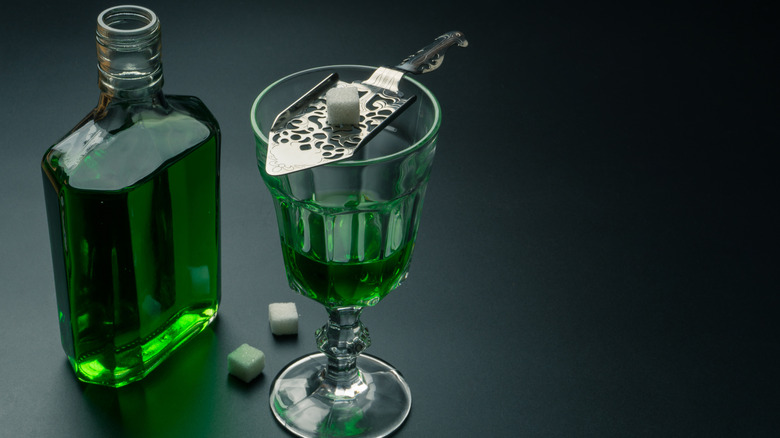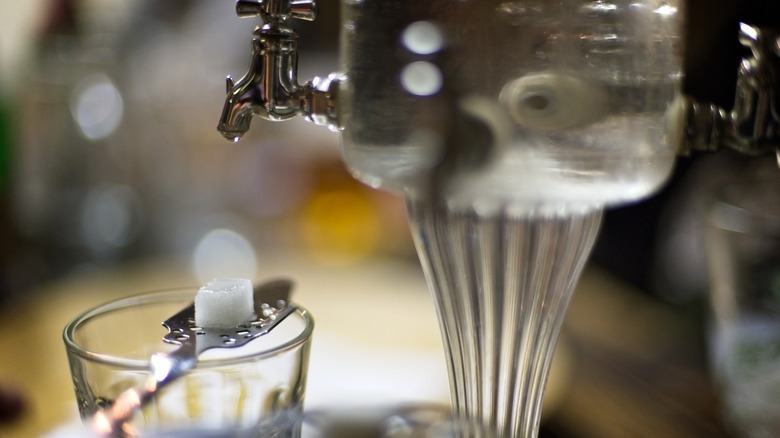Why Sugar Cubes Are Essential When Drinking Absinthe
So much lore swirls around absinthe, the mysterious beverage deemed so dangerous it was prohibited in the United States from 1912 until 2007, according to Absinthe Original. Absinthe is associated with decadence and debauchery, famously consumed by poets, painters, and playwrights like Oscar Wilde, Edouard Manet, Paul Verlaine, Arthur Rimbaud, Vincent Van Gogh, Pablo Picasso, and Ernest Hemingway, according to the Science History Institute.
While the Green Fairy was reputed to cause hallucinations because it's made with wormwood along with the botanicals infused into the spirit, scientists have long since dismissed such claims, as the quantity of thujone — the potentially hallucinogenic substance in that wormwood — isn't present in sufficient quantity to induce hallucinations. Thujone is, in large quantities, quite toxic and known to cause convulsions, the Science History Institute explains, but even at the height of absinthe's popularity, before the level of thujone was as strictly regulated as it is now, absinthe didn't contain enough wormwood to have hallucinogenic properties.
What absinthe did have — and still does have — is a distinctively bitter, highly aromatic presence, coupled with a whole lot of alcohol. How much alcohol? Absinthe typically contains 45% to 74% alcohol by volume (ABV), though some can have as much as 89% ABV. When you compare that to the ABV of a typical spirit — around 40% ABV — you can see why absinthe isn't generally consumed neat. Instead, there's a very specific method for preparing it.
How is absinthe typically served?
Absinthe is infused with assertive botanicals like wormwood, anise, fennel, coriander, and hyssop. These pronounced flavors, coupled with its high alcohol content make it ideal for complex cocktails like the Sazerac or the Obituary. But if you're chasing the Green Fairy on its own, there's a proper way to prepare it ... a ritual if you will.
If you order an absinthe drip at the right specialty cocktail bar, you'll get the full treatment. An absinthe fountain containing ice water will slowly drip water into a glass of absinthe, aiming for a ratio, according to Fine Dining Lovers, of one part absinthe to roughly three to five parts water. Atop that glass, though, is the important part. A specially designed absinthe spoon, usually with ornate slotted cutouts, holds a single sugar cube, which melts into the absinthe as it's slowly dissolved by the drips of water from the fountain.
Of course, you can create the absinthe drip yourself, even without a fountain, simply by slowly dripping chilled water over the sugar cube resting on the spoon above the glass containing absinthe. As the chilled water and sugar mixes with the spirit, it turns from clear to cloudy, demonstrating that it's the proper temperature. Your absinthe, properly diluted and sweetened by the sugar cube, will still be powerfully aromatic and flavorful and should be sipped and savored slowly.

